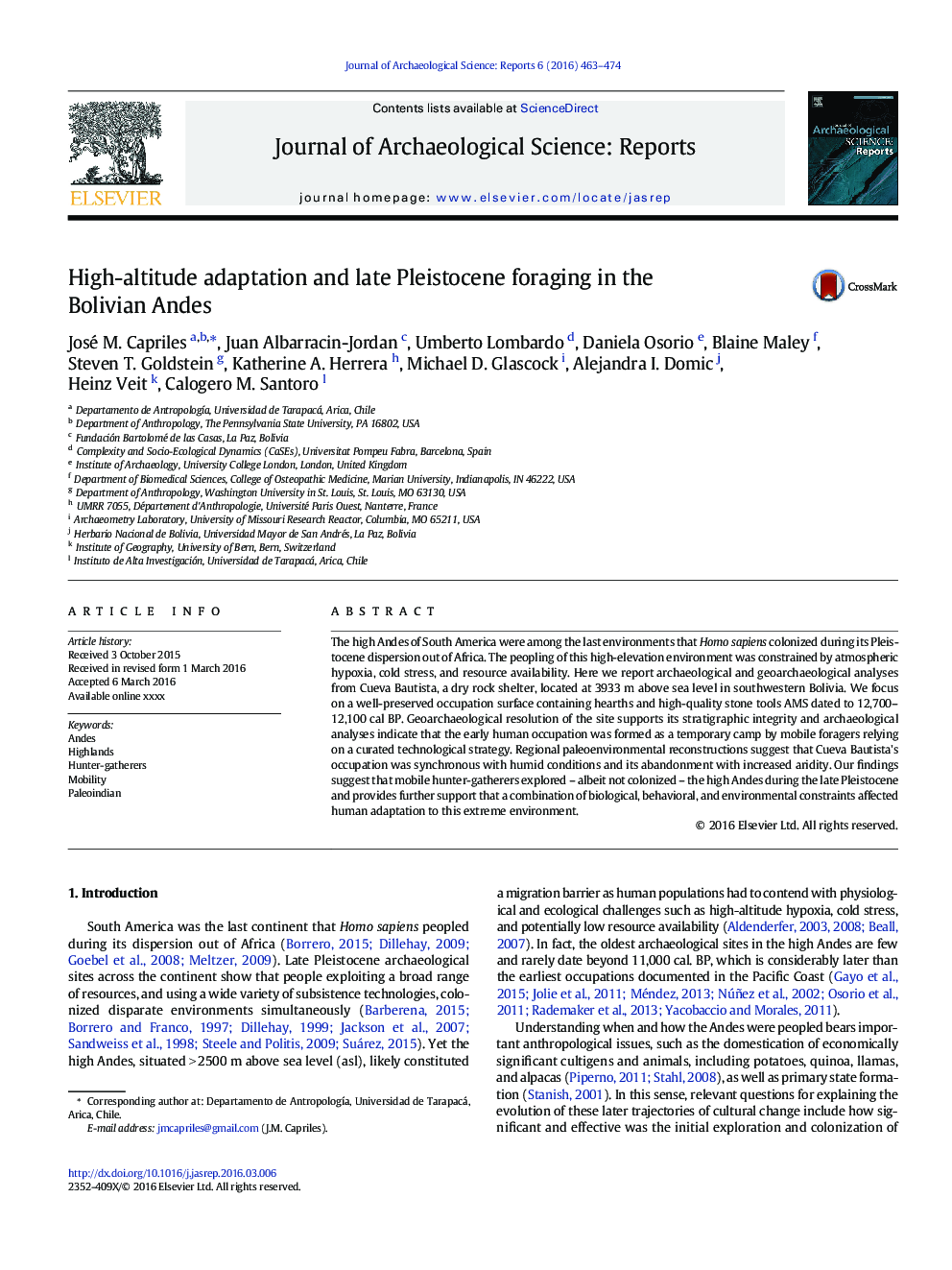| کد مقاله | کد نشریه | سال انتشار | مقاله انگلیسی | نسخه تمام متن |
|---|---|---|---|---|
| 7446514 | 1483937 | 2016 | 12 صفحه PDF | دانلود رایگان |
عنوان انگلیسی مقاله ISI
High-altitude adaptation and late Pleistocene foraging in the Bolivian Andes
ترجمه فارسی عنوان
انطباق با ارتفاع بالا و غذا خوردن دیرهنگام پلاتیستن در آند آندر بولیوی
دانلود مقاله + سفارش ترجمه
دانلود مقاله ISI انگلیسی
رایگان برای ایرانیان
موضوعات مرتبط
علوم انسانی و اجتماعی
علوم انسانی و هنر
تاریخ
چکیده انگلیسی
The high Andes of South America were among the last environments that Homo sapiens colonized during its Pleistocene dispersion out of Africa. The peopling of this high-elevation environment was constrained by atmospheric hypoxia, cold stress, and resource availability. Here we report archaeological and geoarchaeological analyses from Cueva Bautista, a dry rock shelter, located at 3933Â m above sea level in southwestern Bolivia. We focus on a well-preserved occupation surface containing hearths and high-quality stone tools AMS dated to 12,700-12,100Â cal BP. Geoarchaeological resolution of the site supports its stratigraphic integrity and archaeological analyses indicate that the early human occupation was formed as a temporary camp by mobile foragers relying on a curated technological strategy. Regional paleoenvironmental reconstructions suggest that Cueva Bautista's occupation was synchronous with humid conditions and its abandonment with increased aridity. Our findings suggest that mobile hunter-gatherers explored - albeit not colonized - the high Andes during the late Pleistocene and provides further support that a combination of biological, behavioral, and environmental constraints affected human adaptation to this extreme environment.
ناشر
Database: Elsevier - ScienceDirect (ساینس دایرکت)
Journal: Journal of Archaeological Science: Reports - Volume 6, April 2016, Pages 463-474
Journal: Journal of Archaeological Science: Reports - Volume 6, April 2016, Pages 463-474
نویسندگان
José M. Capriles, Juan Albarracin-Jordan, Umberto Lombardo, Daniela Osorio, Blaine Maley, Steven T. Goldstein, Katherine A. Herrera, Michael D. Glascock, Alejandra I. Domic, Heinz Veit, Calogero M. Santoro,
